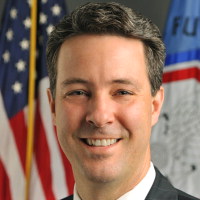Swap trading reforms hit the rocks as CFTC’s O’Malia recommends delay
Institutions are unlikely to be able to meet the 2 October deadline to register with a Swap Execution Facility for trading, as required under the Dodd-Frank Wall Street Reform Act, and the Commodity Futures Trading Commission’s reform programme will hurt ordinary market participants and increase systemic risk rather than reduce it, say critics – including the CFTC’s own Commissioner Scott O’ Malia, who has called for more time for the SEF reforms to be implemented.
“The most likely outcome for now is that the CFTC will have to issue more ‘no action’ letters,” said Tom White, research analyst at JWG. “But the introduction of Footnote 88 at the last minute means a lot of firms thought they wouldn’t have to register on SEFs, and have now discovered that they must. That’s going to be a problem for the market, which will now not only need to re-think derivatives trading strategies but also revisit their trading infrastructure, including rules, MI and reference data.”
Swap execution facilities are a new category of trading venues that have been brought into existence by the Dodd-Frank Wall Street Reform Act, which is part of a global G20 drive to reduce systemic risk in financial markets by increasing transparency in OTC derivatives markets. The rules state that the bulk of former OTC derivatives contracts must now be standardised, centrally cleared and reported and traded on exchange-like platforms wherever there is sufficient liquidity.
Footnote 88, which has been called “notorious” by O’ Malia in recognition of its dramatic and controversial impact on the industry, is a recent addition by the CFTC which details which instruments are liable to be traded on SEFs – a provision that applies to a far wider range of instruments and therefore firms than previously expected. The rules require existing multiple-to-multiple swap trading venues to register as SEFs, even if they only offer products that are not yet subject to the trade execution mandate. This has resulted in venues offering products like non-deliverable forwards and foreign exchange options to rush to get registration applications completed on time.
“If you imagine you expected only certain derivatives to be in scope for certain products, and now you realise that your entire portfolio is going to be traded on regulated SEFs, it could introduce a lot of additional cost and operational complexity that wasn’t accounted for,” said White.
O’ Malia also confirmed in his speech on 26 September that there are serious concerns among SEFs that the trade reporting mechanisms for swap execution facilities may not be ready in time. The CFTC has already issued a number of no action letters to various firms ahead of the deadline, including LCH Clearnet, on the grounds that the regulator is unable to process their applications to become SEFs before the 2 October deadline. Some form of delay looks inevitable, although it remains unclear whether the compliance date itself will be rolled back or whether the majority of firms affected will simply be given additional time on a case by case basis.
“Given the concerns raised by market participants, it would make sense to delay the October 2 compliance date, especially because this date is an arbitrary date and is not tied to any legal requirements,” said O’Malia. “Market participants would benefit from getting a time-limited extension to allow for a smooth transition to these new execution venues. If the Commission wants to foster a robust, competitive landscape for SEFs, it must be flexible enough to adjust the compliance date based on market and technology realities, and not stick with an unworkable date simply to adhere to an individual agenda.”
The admission by the regulator has been widely seen as a concession to common sense, and a positive move overall. According to JWG, the requirement to register on a SEF or cease trading is not likely to be enforced strictly on the 2 October, but market participants will still be forced to rethink how they trade derivatives, and how they handle the reconciliation data. Some observers point out that the entire premise of requiring trades to be made on publicly visible markets may actually be counter-productive, since it could simply lead to a reduction in trading activity, or its migration elsewhere.
“There is a possibility that the screens may go dark, and that trading may move elsewhere onto other markets,” said White. “For example, we may see a rise in phone calls and emails, which is contrary to the original objective of improved transparency.”
“That’s a best-case scenario,” he added. “Some firms may re-vamp their trading strategies altogether, and come up with new and complex methods of hedging risk. This could end up being a much worse outcome for everybody, not just derivatives markets.”












































